Turning an underutilized basement into a functional and inviting space can greatly improve your home’s livability and value. Whether you’re dreaming of a cozy family retreat, a productive home office, or an entertainment hub, the possibilities are endless. In this guide, we’ll highlight inspiring basement makeovers and provide some practical tips to help you maximize your underground space.
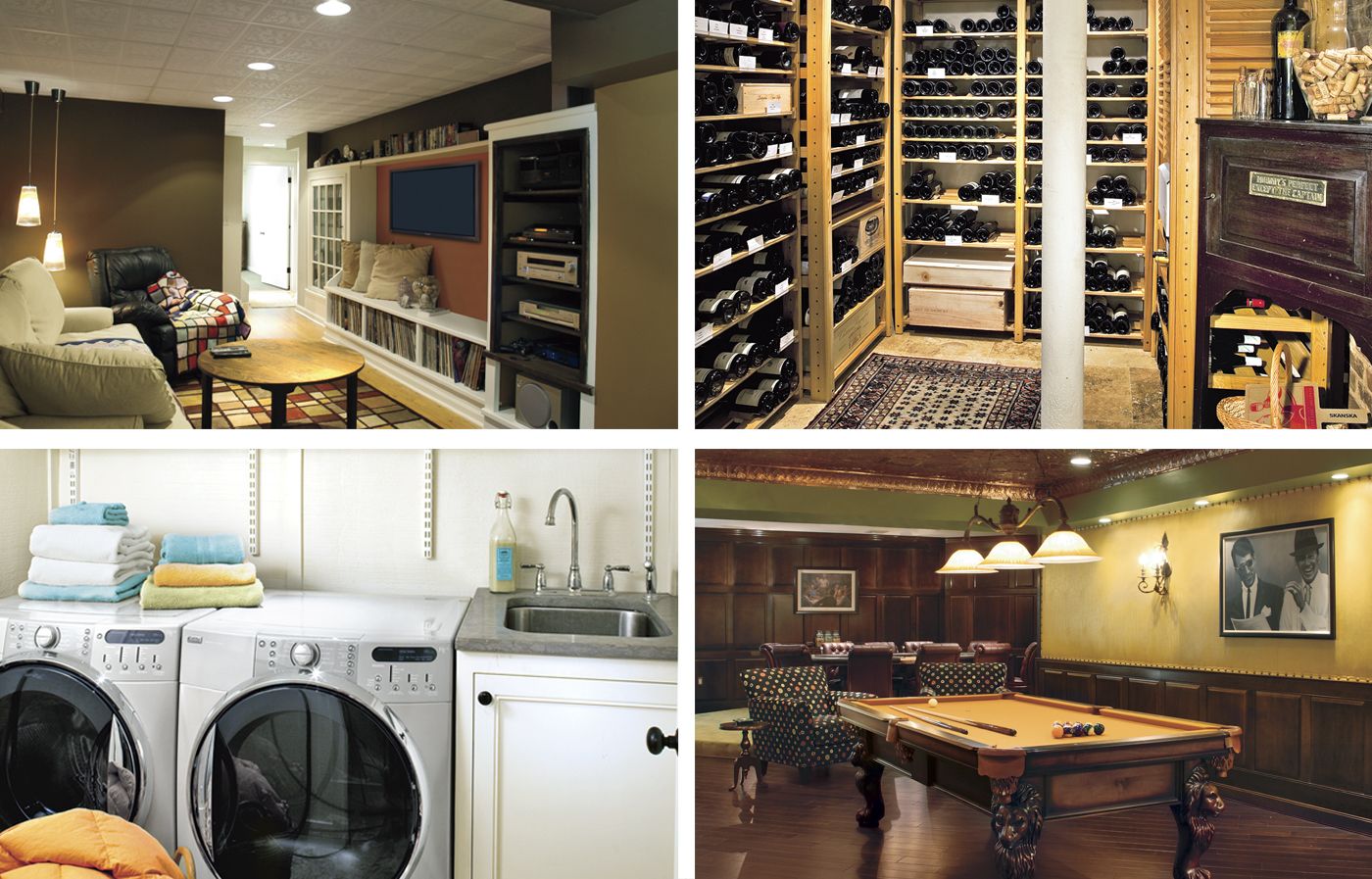
Uncovering Potential Beneath Your Feet
Sometimes, that extra room you’ve always wanted is right under your feet. Elizabeth Willett, an interior decorator in Atlanta, was looking to fulfill several needs in her family’s 1927 Tudor-style house when she saw untapped potential in its walk-out basement. “It already had a fireplace and a tiny bath, but it had never really been properly finished,” she says. While the ceiling was low, moisture—the bane of basement remodels—wasn’t a problem, making it a great candidate for renovation.
Soon, Elizabeth and her husband, Chris, were picturing the equivalent of an 830-square-foot addition with a whole host of amenities. Working with architect Jack Davis and contractor Rod Boyer, the couple created a family retreat and entertainment space at the bottom of the stairs. Guests can hang a left to check out the wine cellar or plop down on a sofa facing the stone fireplace and a TV. Davis even managed to fit in a full bath, a laundry area, a food pantry, and a home office space. “There were lots of nooks and crannies, and we’ve used every square inch,” Elizabeth says.
While their re-do was unusually ambitious, it involved design solutions to problems that crop up in any basement conversion. Read on to learn how the family went from floor plan to finished space, then find five extra basement design ideas.
Welcome to the Basement Clubhouse
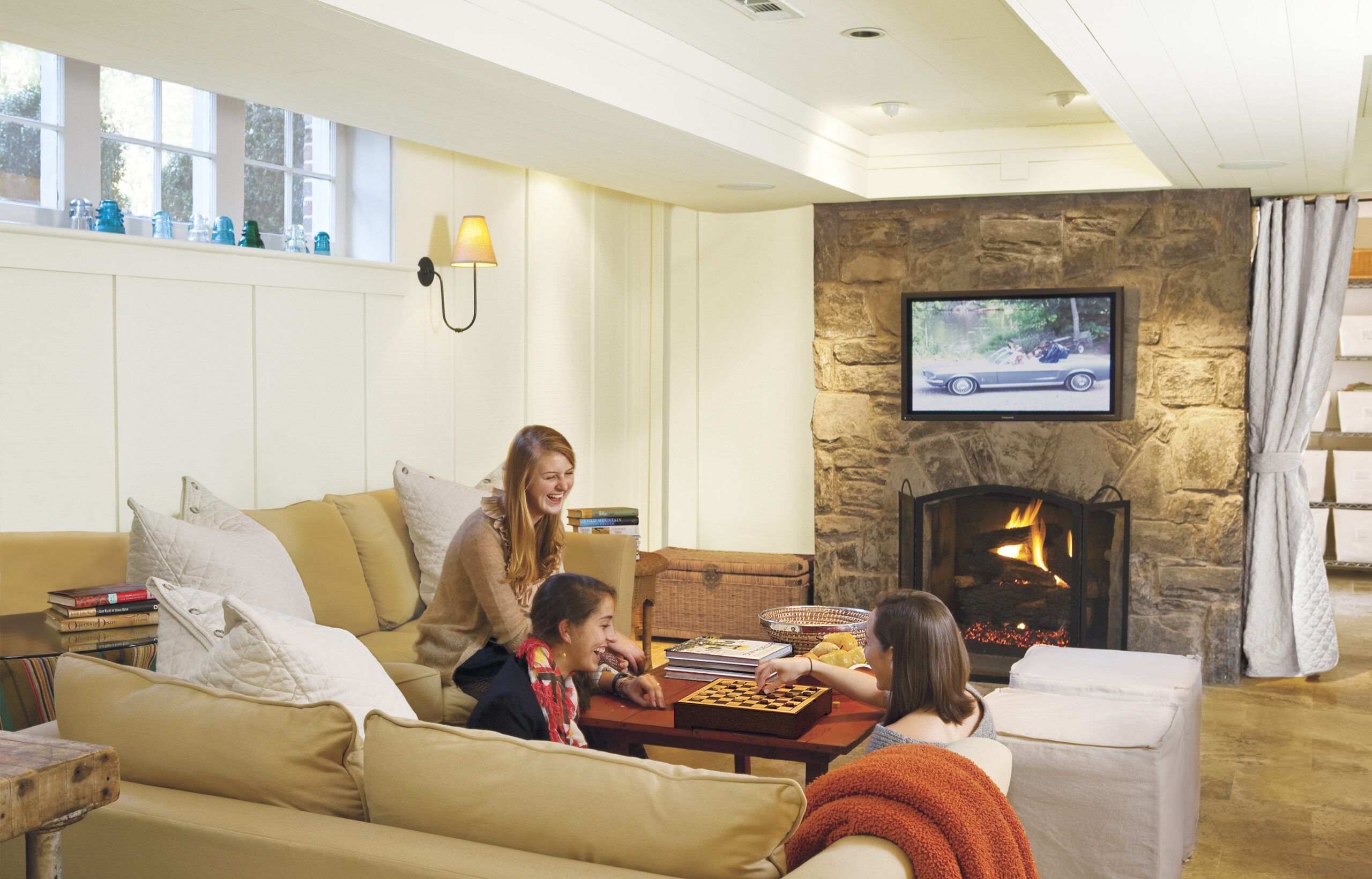
A well-designed basement can become the heart of family gatherings and entertainment. In this example, a rustic-looking family room is now a hang-out spot. The space showcases how you can transform structural elements into design features, with ceiling beams replacing support posts. Soft furnishings, including a sofa that doubles as a guest bed, replace the clutter of storage boxes.
They installed soffits with tongue-and-groove planks to maximize headroom and conceal necessary ductwork. This approach hides unsightly elements and adds a touch of warmth and texture to the space.
When planning your basement renovation, look at working with an experienced architect and builder to address structural challenges creatively.
Architect: Jack Davis
Builder: Rod Boyer, Atlanta, GA
Sliding Access to Basement Rooms
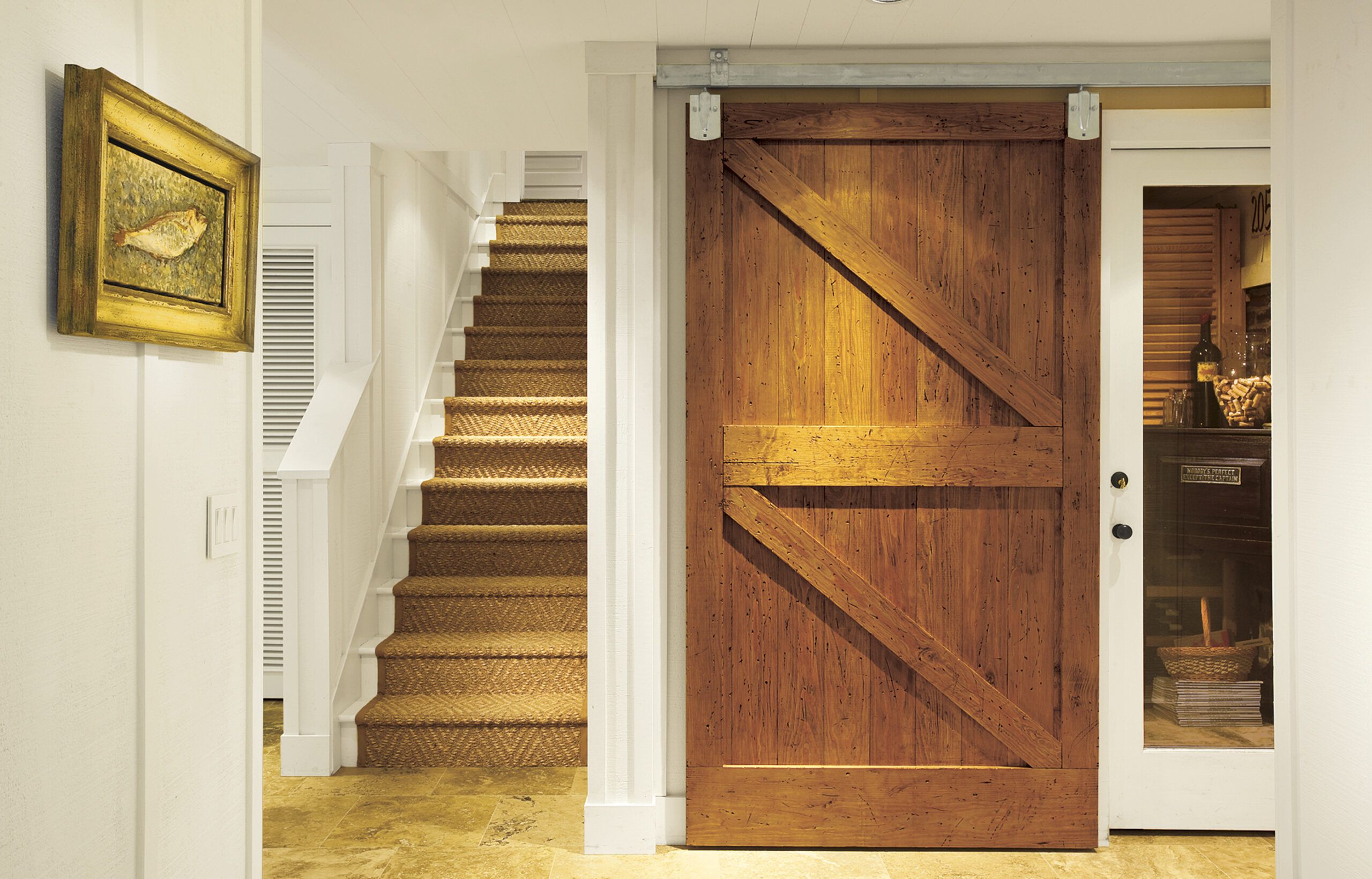
Sliding doors can be both functional and stylish in a basement design. Here, a barn door adds rustic charm and serves a practical purpose by concealing the adjacent wine cellar when needed. This type of feature is especially useful in basement spaces where traditional swing doors might disrupt traffic flow or take up valuable floor space.
Cottage-Style Basement Office
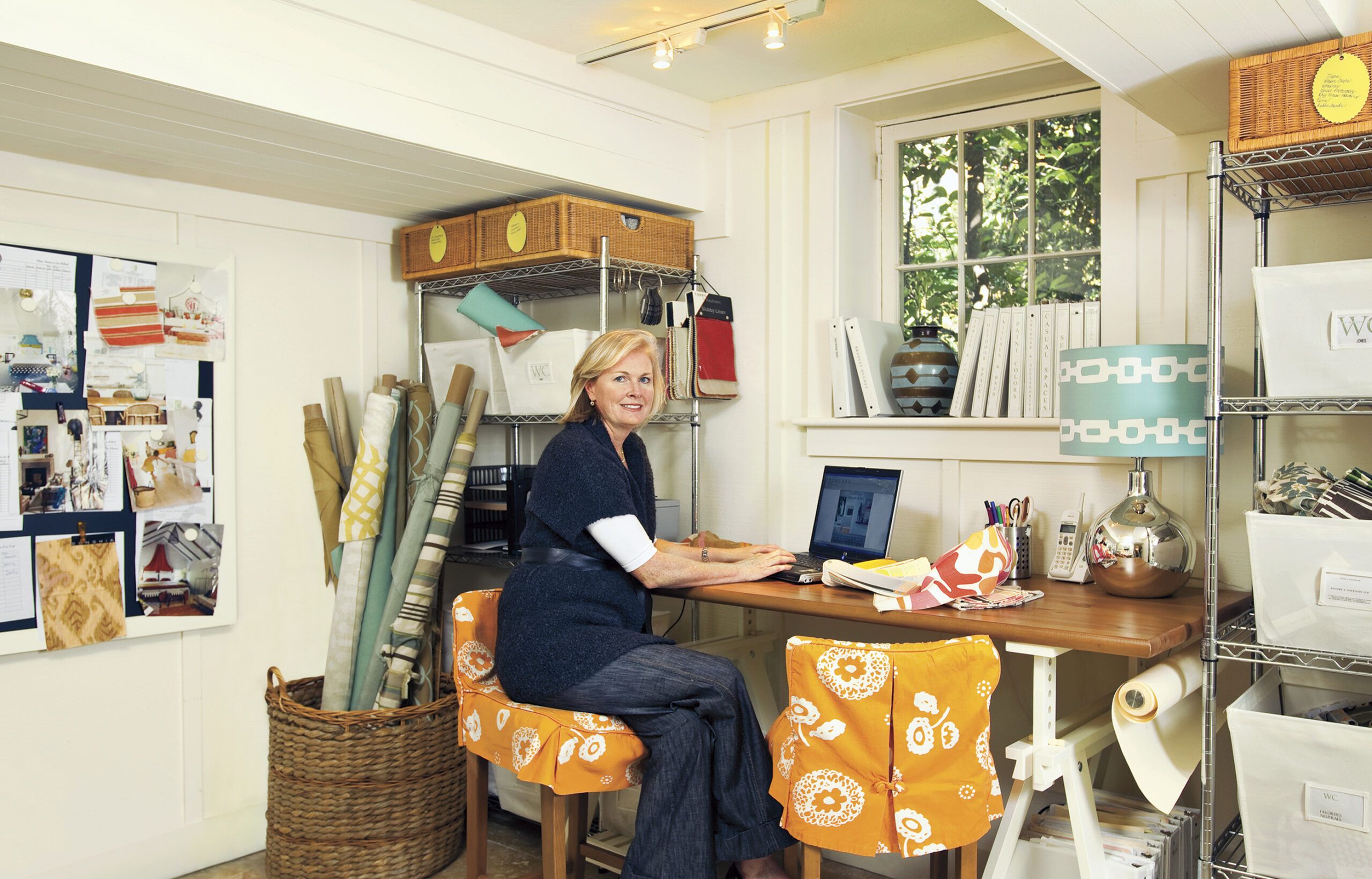
Creating a home office in your basement can provide a quiet, dedicated workspace away from the main living areas. This cottage-style office demonstrates how to blend functionality with cozy design elements.
Elizabeth crafted a corner office with casual touches like a sawhorse desk and stools with vibrant slipcovers. Commercial-style shelves hold files in canvas bins—”one per client,” she says. The redo benefited from existing windows, but deep new sills offer impromptu storage and display space.
Working with a lighting pro, Elizabeth augmented natural light throughout the basement with task lamps, wall sconces, and recessed fixtures with halogen bulbs. Walls throughout are finished with painted rough-sawn plywood; battens create the look of paneling and hide any seams. By creating a warm and well-lit environment, you too can make your basement office a pleasant place to work.
Canvas bins: Bed Bath & Beyond
Lamp: West Elm
Slipcover fabric: IKEA
Curtained Partition in the Basement

Flexible room dividers can help define spaces in an open basement plan without sacrificing light or airflow. Here, a soft canvas room divider echoes the storage bins in the office area and hangs on one side of the fireplace. This improvement allows for easy separation of spaces when needed while maintaining an open feel when desired.
The use of off-white paint and mostly neutral furnishings helps keep the basement’s various nooks and crannies bright and visually connected. This color scheme is great in basement spaces where maximizing light is important.
Introducing movable partitions offers flexibility in how you use the space. This approach can help create multifunctional areas that adapt to your changing needs.
Paint: Benjamin Moore, Linen White
Rustic Basement Wine Cellar

For wine enthusiasts, a basement can be the perfect location for a dedicated wine cellar. This 78-square-foot chamber, lined with open wine racks, makes excellent use of the naturally cool basement environment. They installed an air conditioning unit to combat humidity and maintain optimal conditions for wine storage.
To warm up the space visually, Elizabeth incorporated family heirlooms, including a rug and corner cabinet handed down by her father-in-law. Leather straps and vintage wooden racks give the space an old-world charm, enhancing the cellar’s cozy and inviting feel.
When designing a basement wine cellar, try incorporating elements that reflect your personal style while providing proper climate control for your collection.
Basement Hide Away
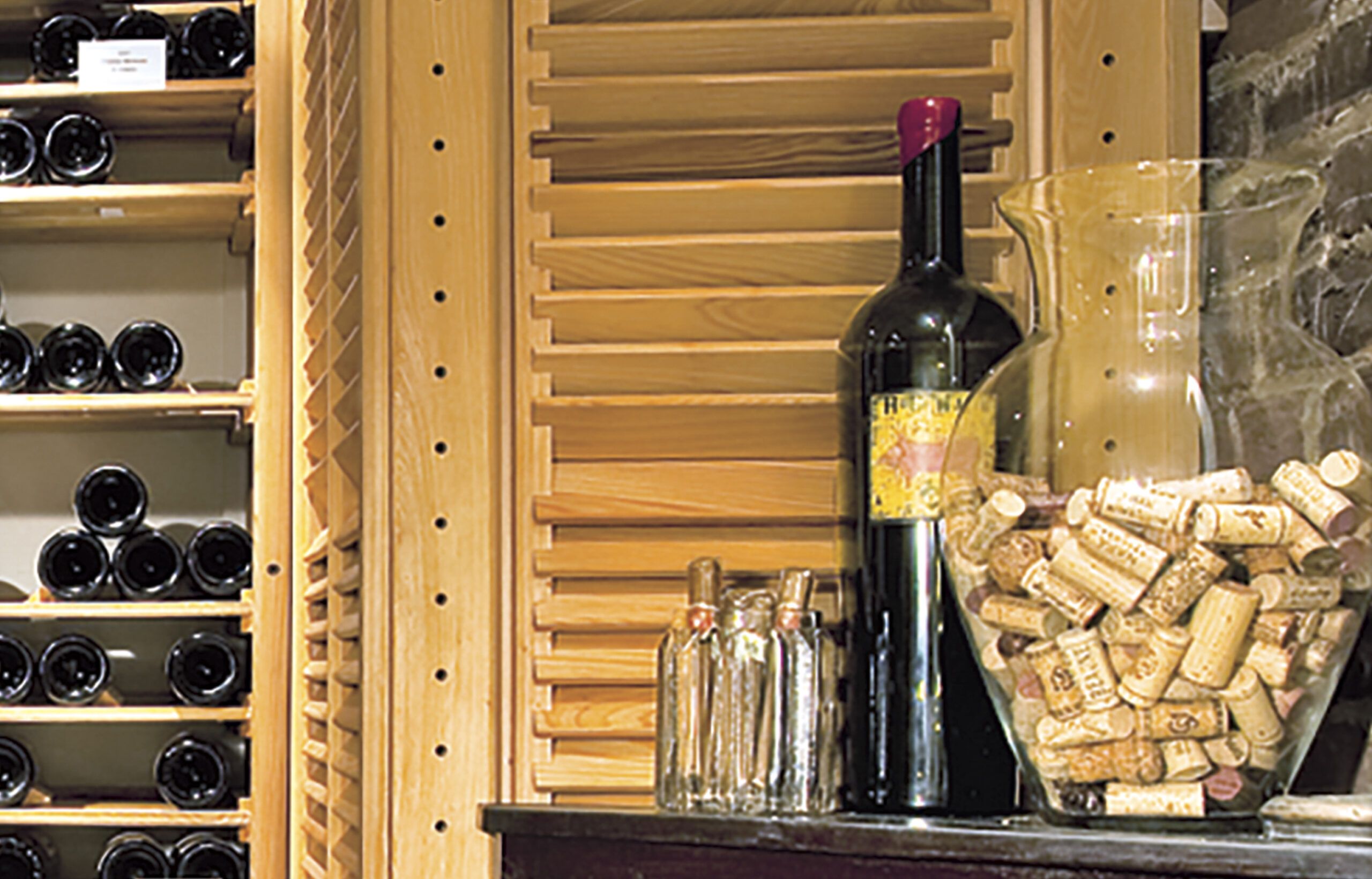
Clever design solutions can help conceal necessary but unattractive elements in your basement. Here, louvered panels disguise an air conditioner without hindering air circulation. This maintains the space’s aesthetic appeal without compromising on functionality.
You can use similar techniques to hide plumbing, electrical panels, or other mechanical systems. Incorporating these elements seamlessly into your design will keep the space clean and visually pleasing.
Vintage-Look Basement Bathroom
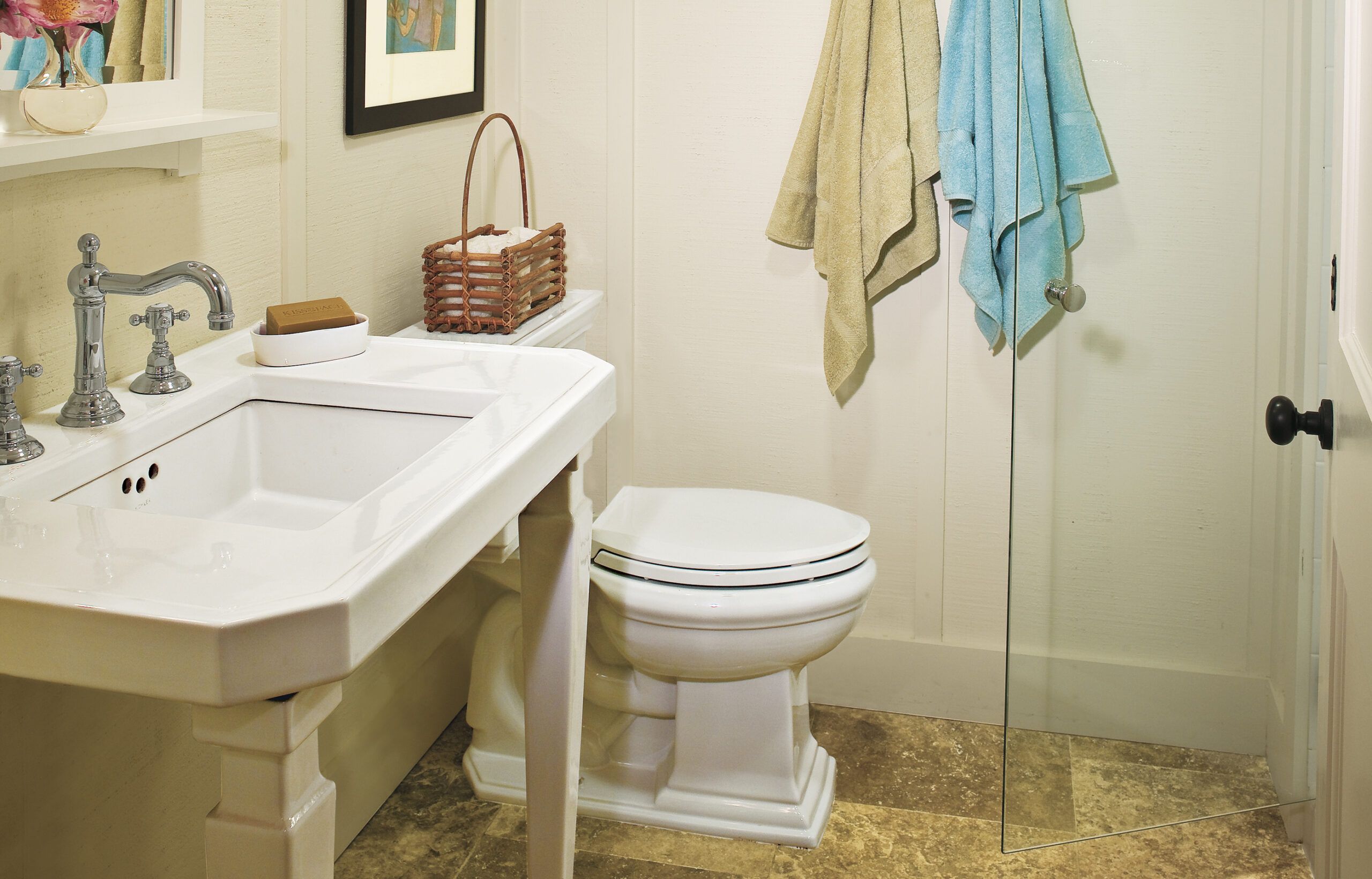
Adding a bathroom to your basement can greatly increase its functionality and comfort. This vintage-inspired bathroom features paneled walls and doors, a porcelain pedestal sink with a cross-handle faucet, and a space-enhancing glass shower door. These elements combine to create a timeless look that complements the overall basement design.
Practical considerations are also important in basement bathrooms. Limestone floor tiles add a light-reflective surface and provide durability against potential moisture issues. Vintage fixtures and fittings add charm and elegance, turning a standard bathroom into a delightful retreat. When planning a basement bathroom, waterproofing and proper ventilation help to prevent mold and mildew.
Sink: Kohler
Faucet: Rohl
Neat, Clean Laundry Room in the Basement
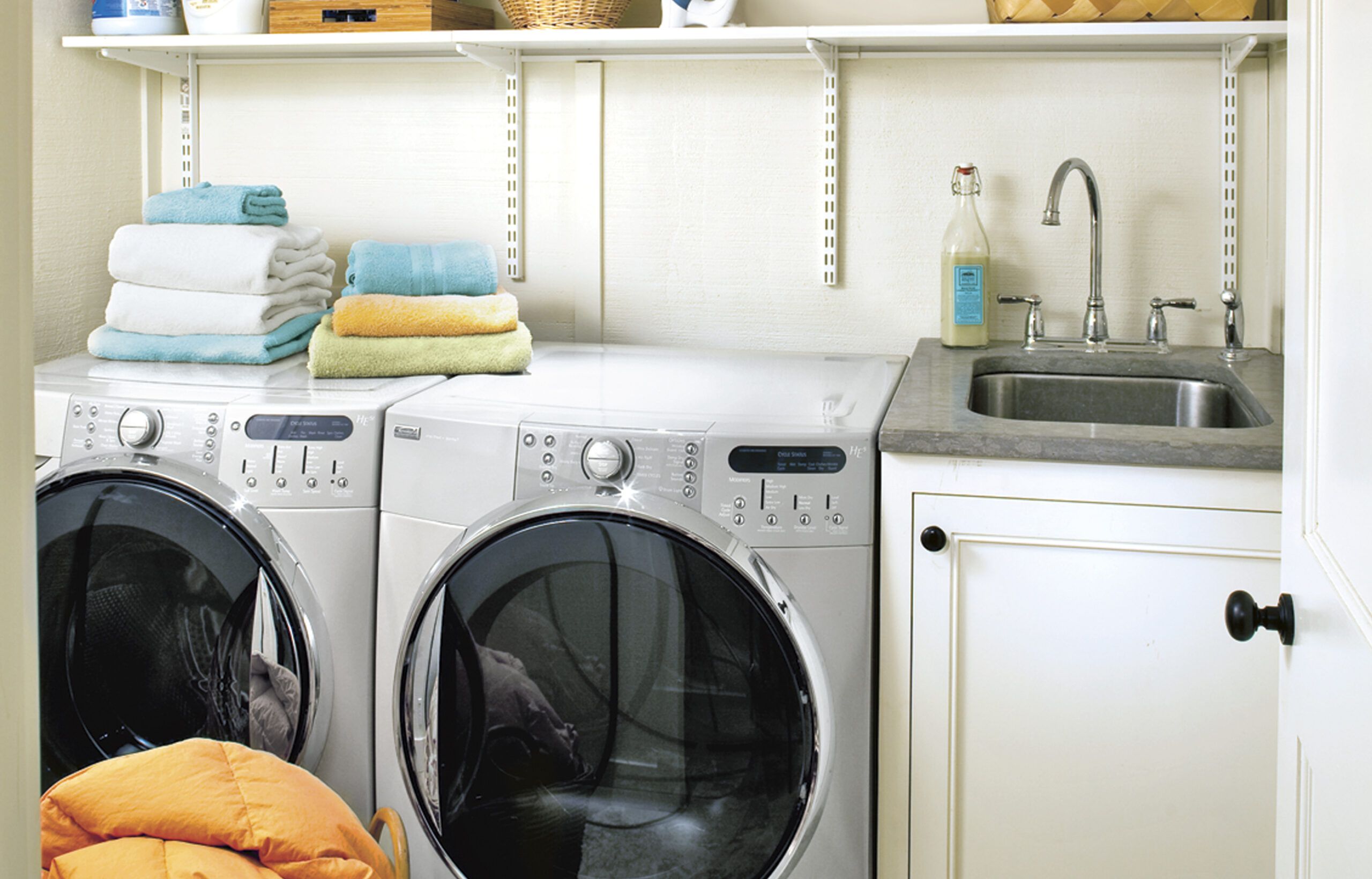
Incorporating a laundry area into your basement can free up valuable space on the main living floors. This corner laundry nook is both functional and inviting. The addition of a small sink with extra storage underneath is convenient for spot-cleaning and general cleanup tasks.
Bright lighting and organized storage can make the laundry process more efficient and enjoyable. By creating an attractive and organized laundry space, you can turn a chore into a more pleasant experience. Consider adding ample lighting and storage solutions to maximize your basement laundry area.
Utilizing space-saving appliances and innovative storage options like wall-mounted drying racks can further enhance the functionality of your basement laundry room.
Washer/dryer: Kenmore
Faucet: Moen
Extra Basement Storage
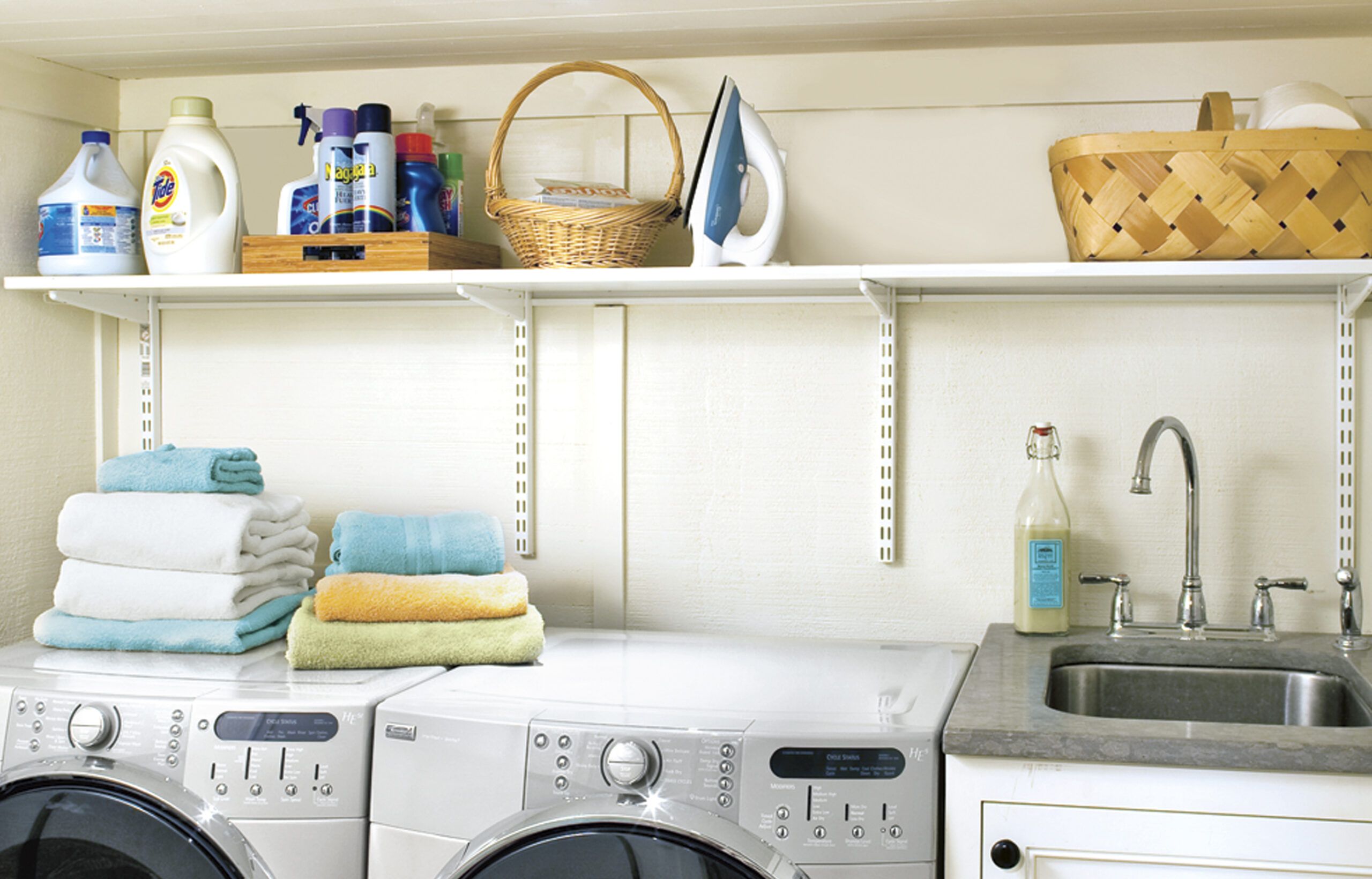
Maximizing storage is often a key goal in basement renovations. For the Willetts, adjustable shelves provide flexible storage for laundry supplies while keeping the tops of the machines clear for folding. When designing your basement bonus room, look for opportunities to incorporate smart storage solutions that help keep the space organized and clutter-free.
Installing custom cabinets, built-in shelves, or even multifunctional furniture can add to the storage capacity. Effective storage solutions can transform a cluttered basement into a streamlined living space without sacrificing style.
Basement Floor Plan
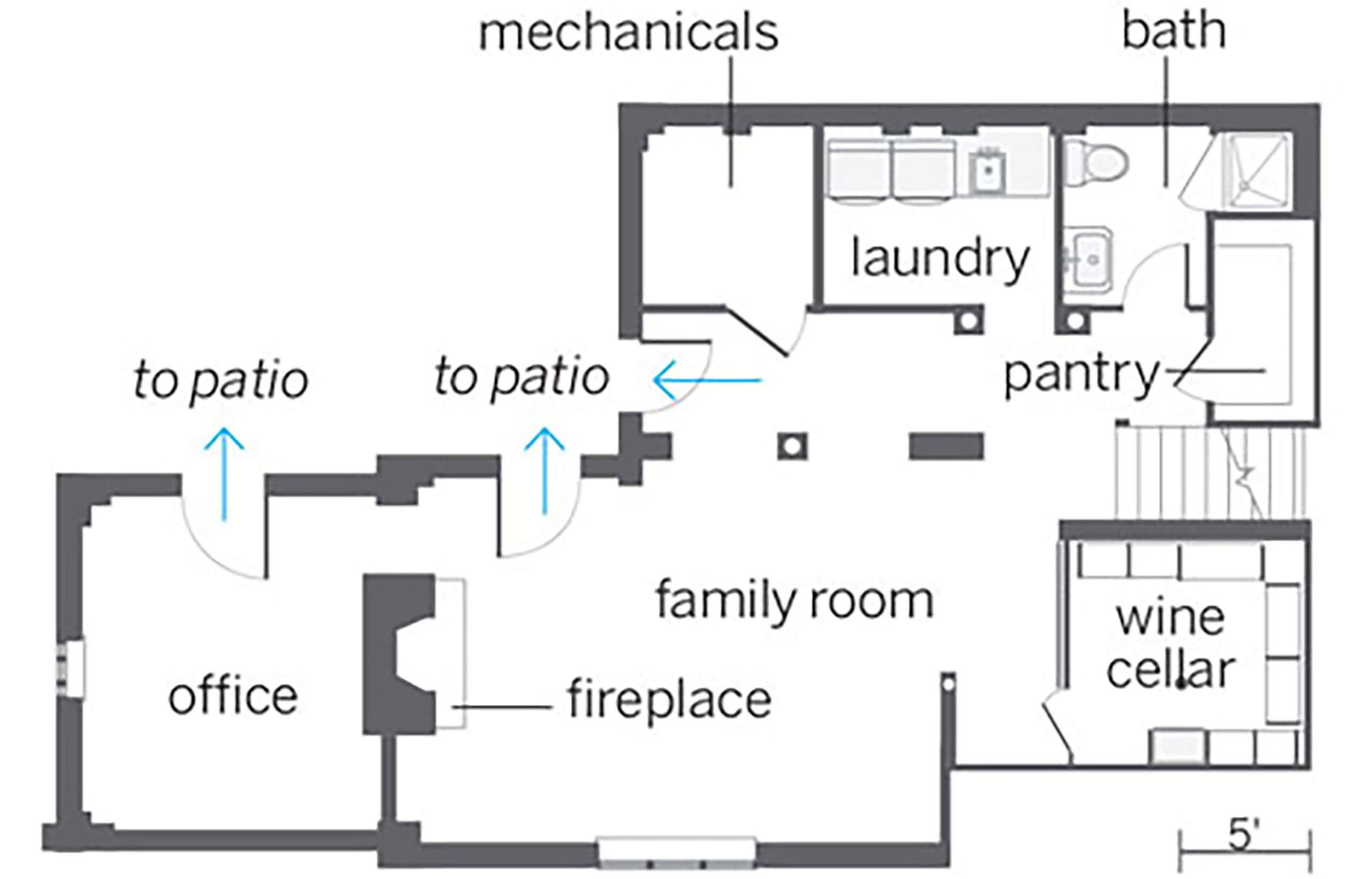
You’ll need a well-thought-out floor plan to make the most of your basement space. This 830-square-foot basement layout proves you can organize various designated areas around existing structural elements efficiently. Davis laid out the 830-square-foot basement around a family room and home office, with the existing hearth dividing them. He fit other rooms—including a wine cellar, pantry, bath, and mechanicals closet—into the remaining space like a jigsaw puzzle, ganging plumbing for the laundry and bath at the back of the house.
5 Problem-Solving Basement Re-Dos
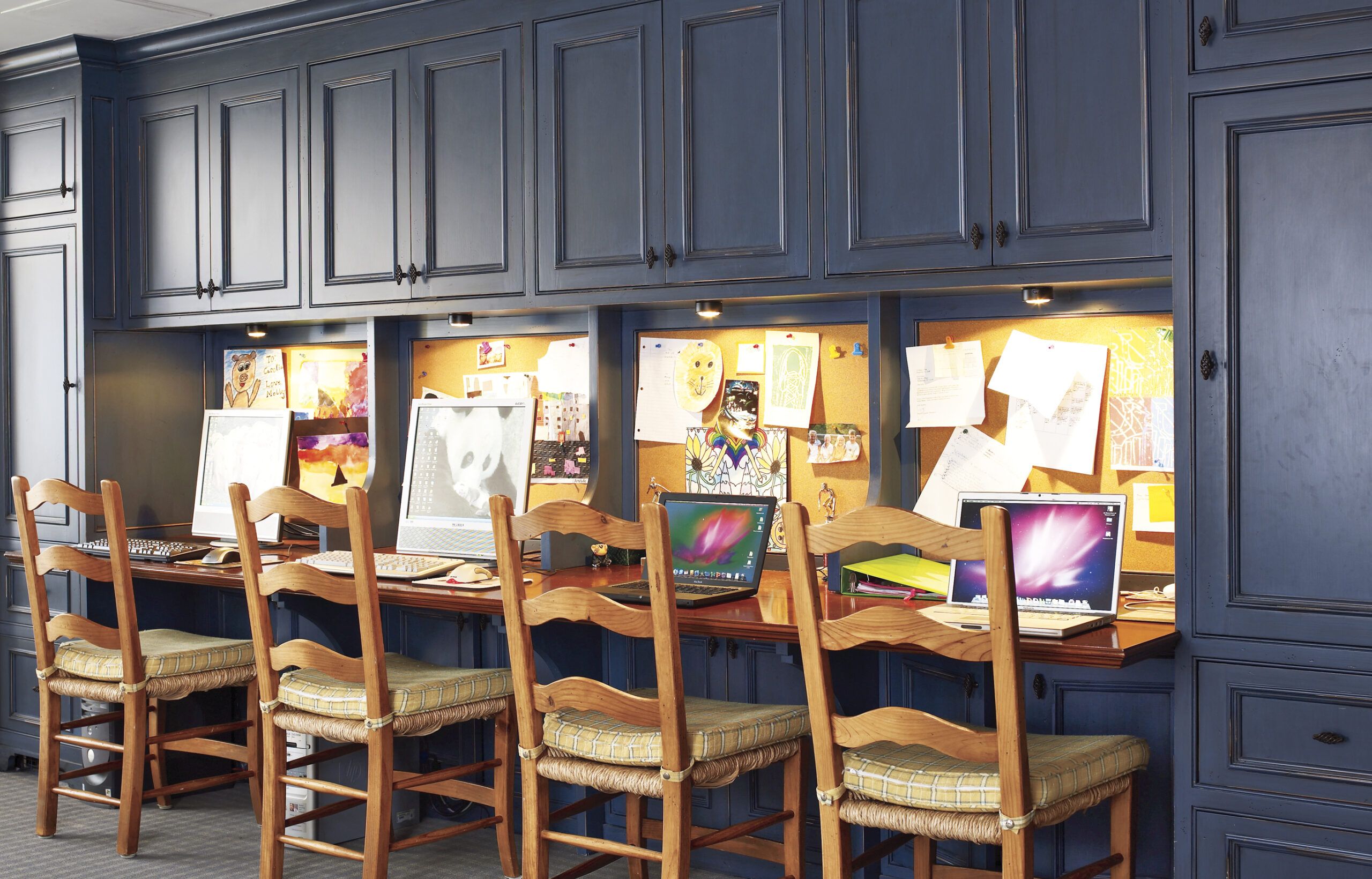
Basements often present unique challenges, but creative thinking can transform them into highly functional bonus rooms. Here are five innovative basement solutions.
Homework Central
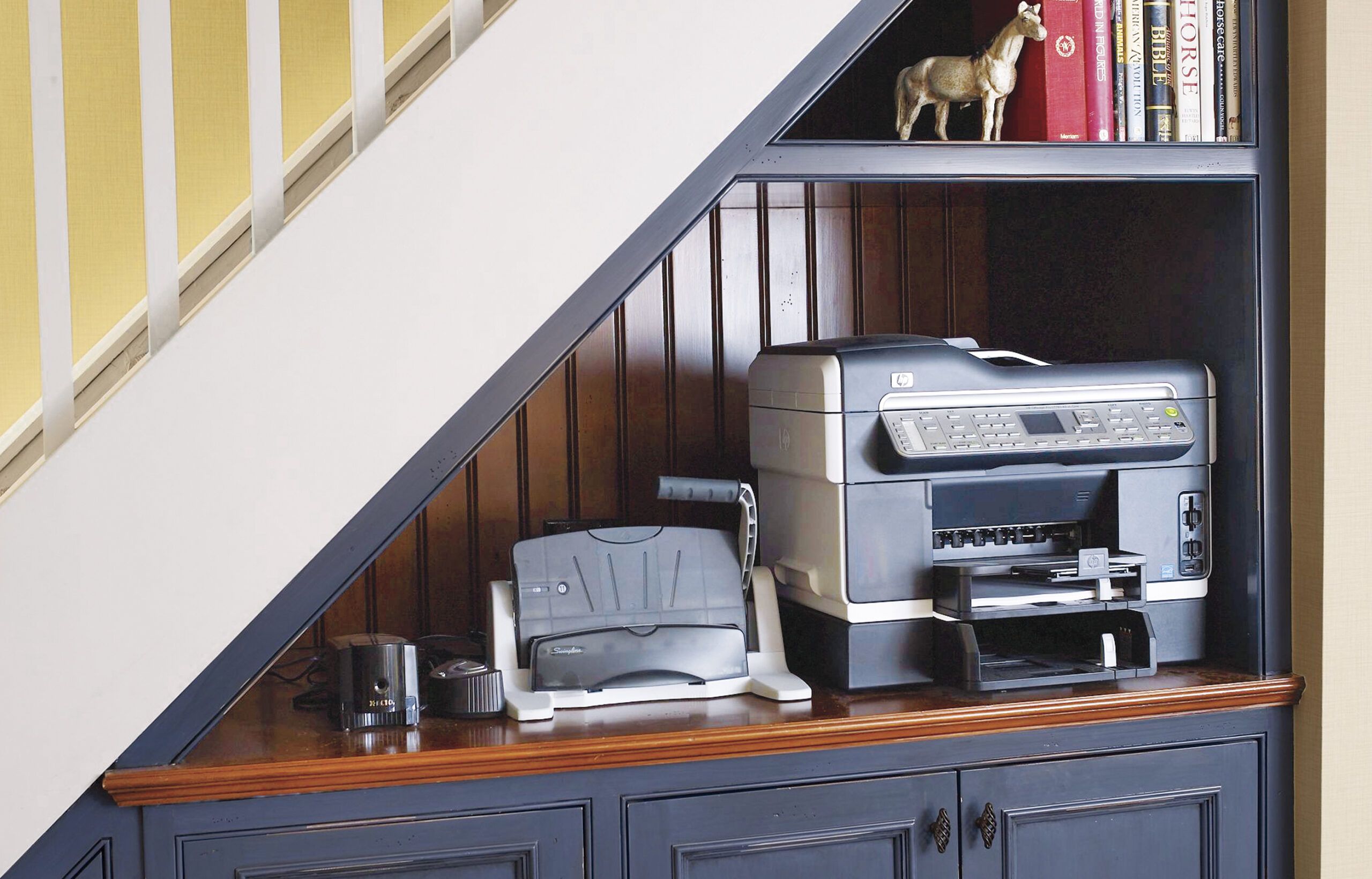
Problem: Four children and their school supplies were cluttering up the kitchen after school.
Solution: The designers created a group homework station inspired by library carrels. Upper cabinets provide storage for school and art supplies while concealing ductwork. Shared office equipment like a printer and hole punch occupy space under the staircase.
By echoing the decor of the main floor, this basement area feels like a natural extension of the home’s living space.
Architect: Carol J.W. Kurth, AIA
Builder: Legacy Construction Northeast
Drinks Station
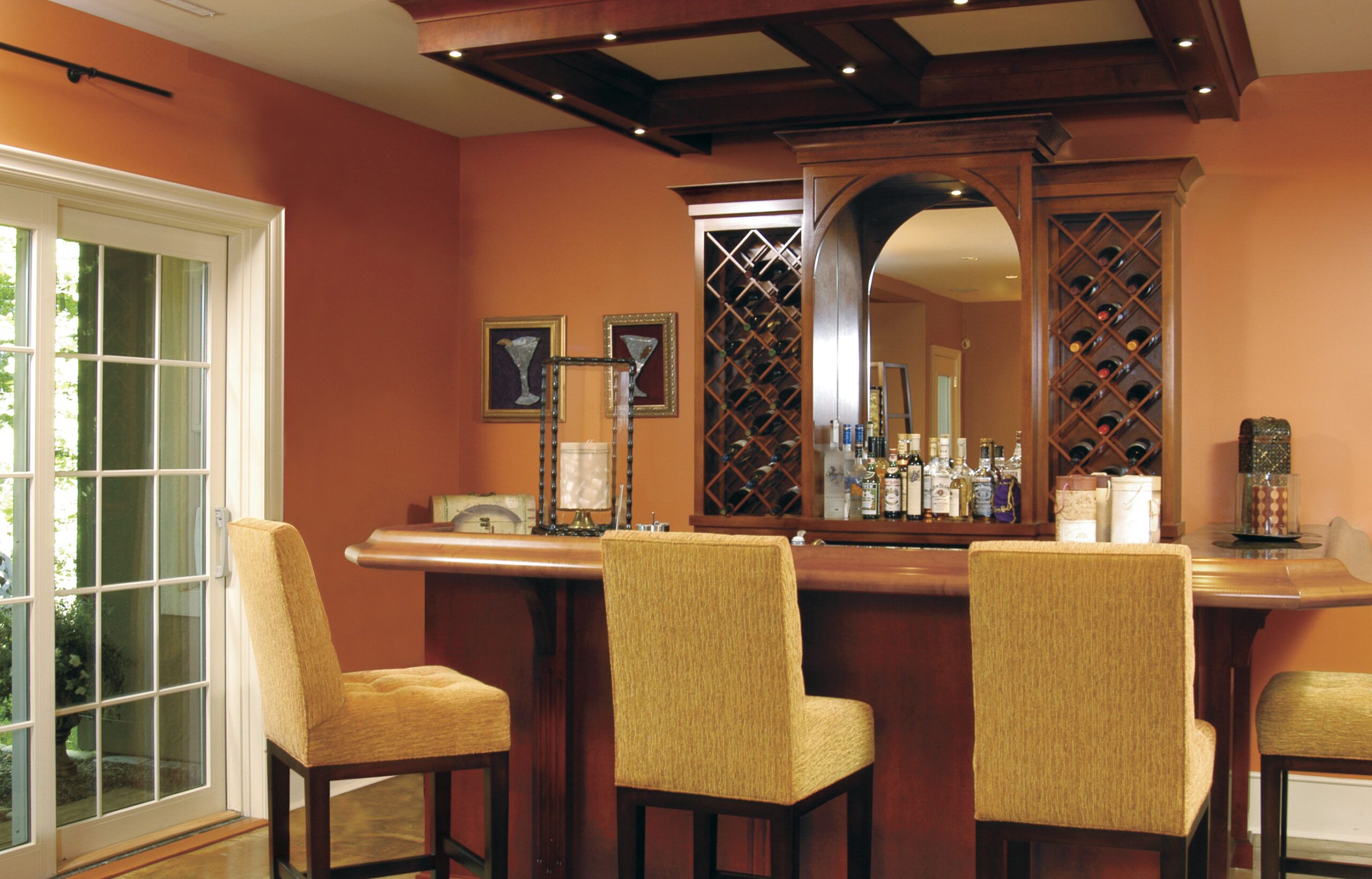
Problem: Refreshments were inconveniently located a flight of stairs away from the basement TV room.
Solution: A wet bar with a granite top and mini-fridge keeps snacks and drinks close at hand. Wood tones and warm wall colors create a cozy atmosphere, while stained-birch coffering overhead helps define the area. Recessed lights on dimmers allow for adjustable lighting to suit different moods and activities.
A well-designed drink station can turn a simple basement corner into a vibrant social hub, complementing the rest of the basement design.
Design and construction: Durst Construction and Christopher Moleski Fine Woodworking, Whitney Point, NY
Place for Fun and Games
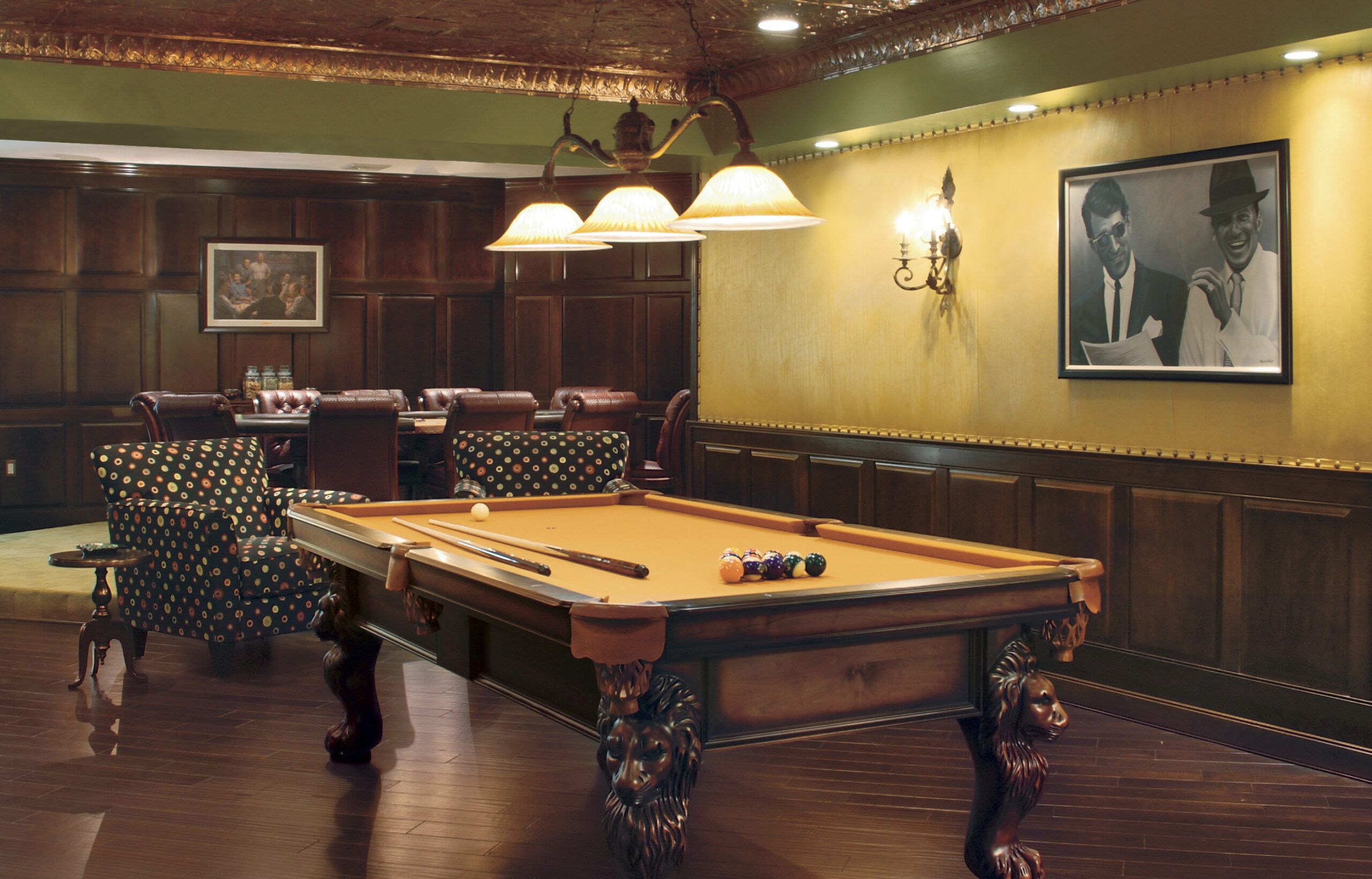
Problem: There was no room upstairs for a desired billiards table.
Solution: The designers transformed a spacious basement area into a sophisticated game room, complete with a pool table and a raised platform for poker. Vintage-style light fixtures, dark wood finishes, a copper-toned ceiling, and faux-leather upholstered walls create an elegant, club-like atmosphere perfect for entertaining.
Incorporating such elegant design elements makes the basement an ideal space for relaxation and socializing. This transformation highlights how a basement can become a luxurious and fun addition to the home.
Design: Noli Design
Cozy Home Theater
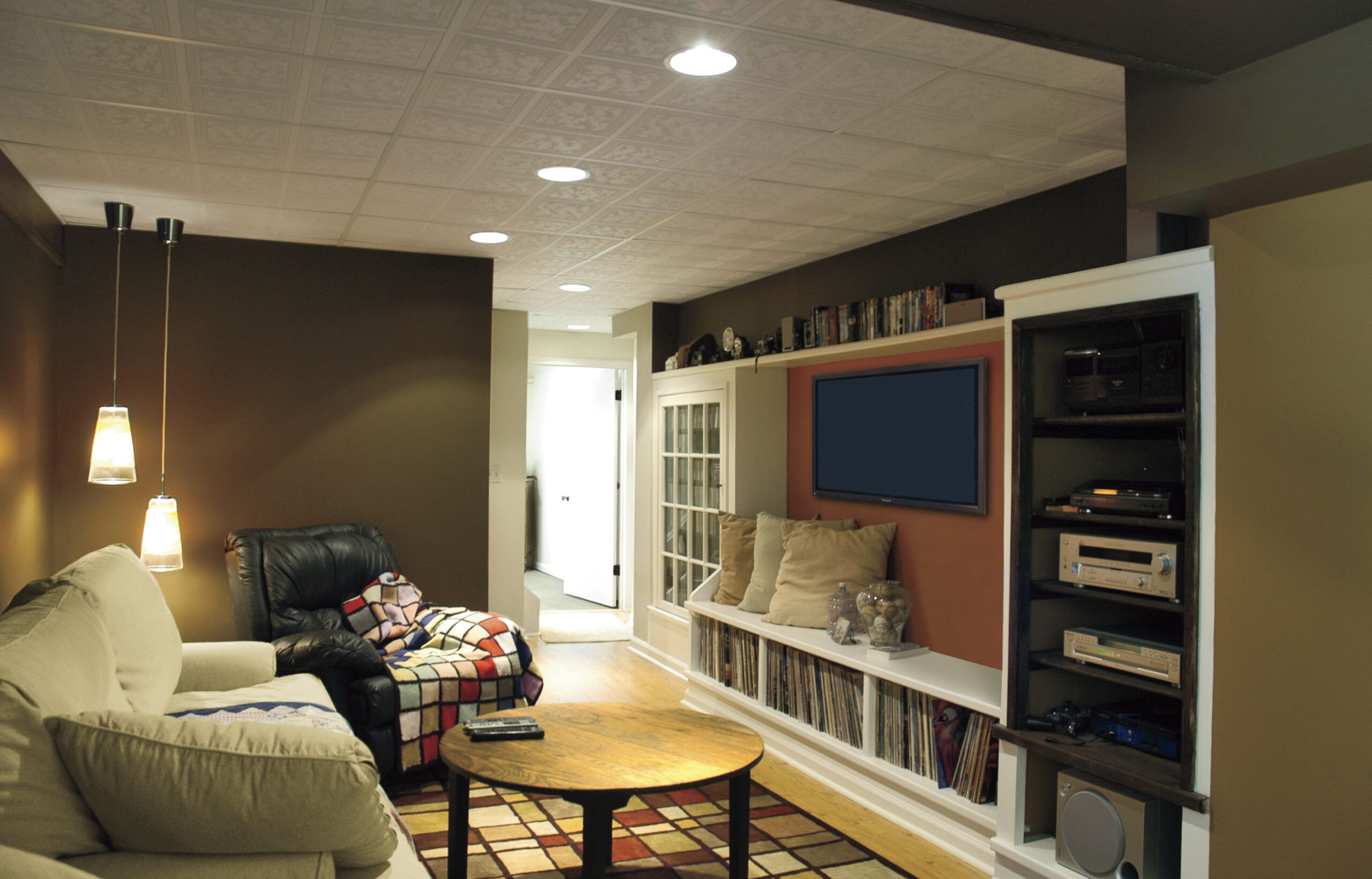
Problem: A teenager had outgrown his room, and the family’s new TV was too large for its current location.
Solution: The designer moved the media center to the basement, allowing the teen to have more space and accommodating a larger TV. A custom-built cabinet houses the television, while recessed lighting maximizes the ceiling height. Pendant lights create a cozy reading nook, and a DIY shelving unit adds character and storage.
Personal touches such as framed posters or thematic decor can further enhance the appeal of a home theater. By customizing the space, you can create an entertainment area that feels intimate and unique.
Design: Lucianna Samu
Builder: Restorations Unlimited, Salem, NY
Airy Suite for Guests
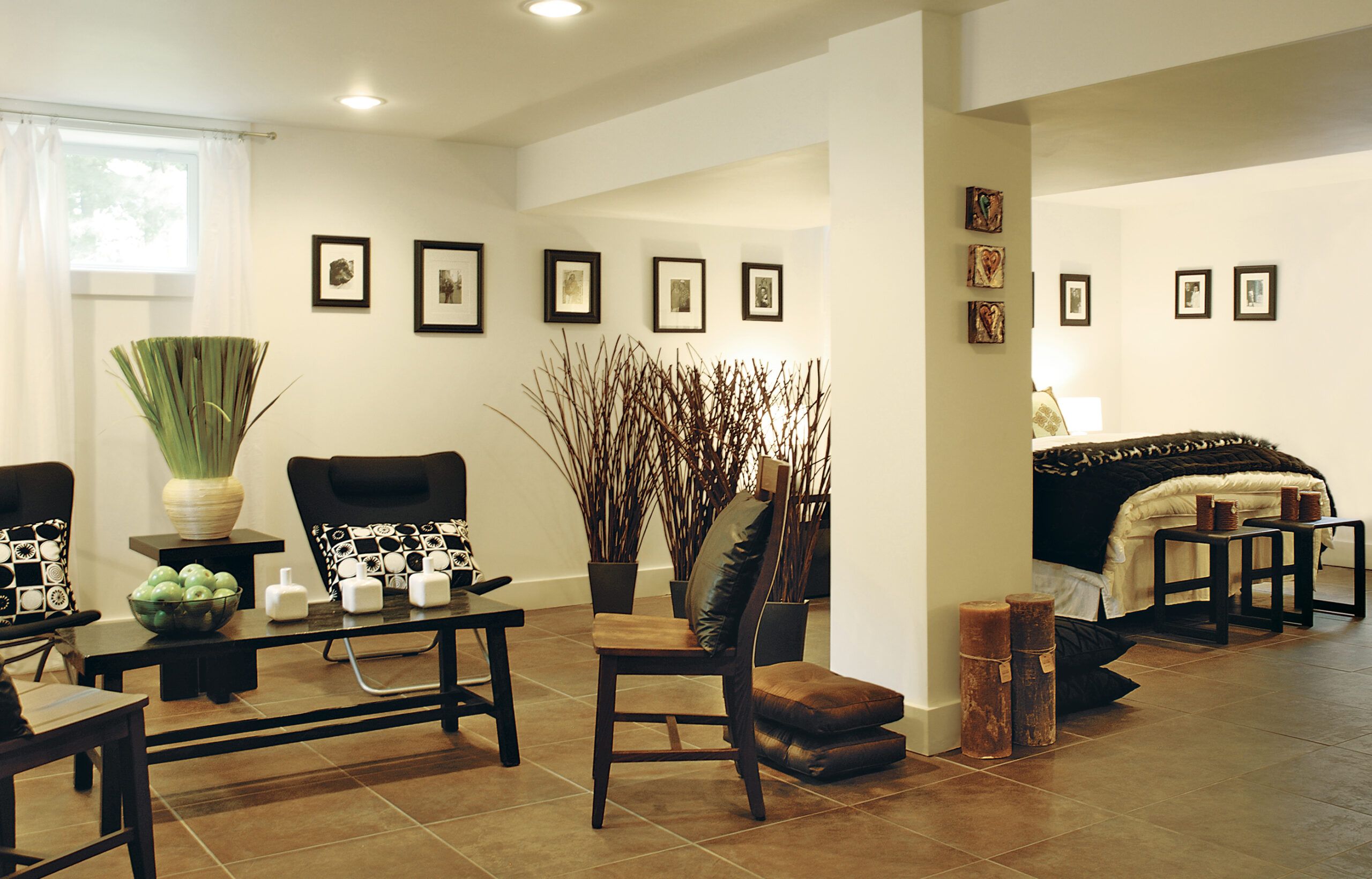
Problem: House guests needed a private space of their own.
Solution: This basement suite mimics the homeowner’s favorite boutique hotel, featuring clean lines and a crisp color palette. Cleverly concealed support columns and ductwork, along with high-quality finishes, elevate the space. A sitting area allows the basement to double as a party space when it’s not in use by guests.
Adding thoughtful touches, such as luxurious linens and comfortable seating, can enhance the guest experience. This approach ensures that the basement remains a versatile and welcoming space.
Design: Maria Billis
Builder: Stephen Ethier, Saratoga Springs, NY
